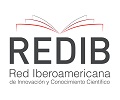Infiltrating mammary carcinoma in a cat with a congenital disorder: prognostic interest of histological examination
DOI:
https://doi.org/10.14409/favecv.2022.0.e0006Palavras-chave:
feline, mammary tumor, lymphatic emboli, prognosisResumo
This report describes the handling and clinical evolution of a malignant feline mammary carcinoma (FMC) in an eight-year-old female crossbred cat with a congenital disorder. Hence, the efficacy of tumor mass removal and the case prognosis was established by postoperative routine histological examination. A 6 cm diameter lump in the left thoracic mammary gland of multinodular appearance and purulent exudate with a reddish hue was excised after the entire mastectomy. The histopathological analysis showed the presence of numerous lymphovascular tumor emboli and frequently mitotic cells with hyperchromatic nuclei. These were consistent with an aggressive malignancy with a poor prognosis explaining the patient's death within 7 weeks after surgery. Histology and cytology findings are of critical importance to clinicians in the management of the most common mammary malignancies in cats, to provide the best possible relief to animals with life-threatening cancer. It could also serve as a cancer model for advancing knowledge in congenitally affected humans.
Referências
Besnard F. 2016. Emboles lymphatiques des carcinomes mammaires invasifs félins: amélioration de leur détection par immunohistochimie et valeur pronostique. Bull. Acad. Vet. Fr. 169: 176-185.
Dagher E, Abadie J, Loussouarn D, Campone M, Nguyen F. 2019. Feline invasive mammary carcinomas: Prognostic value of histological grading. Vet. Pathol. 56: 660-670.
Edge SB, Byrd DR, Compton CC, Fritz AG, Greene FL, Trotti A (eds.). 2010. AJCC cancer staging manual. Ed. Springer Inc., New York. 718 pp.
Goldschmidt M, Peña L, Rasotto R, Zappulli V. 2011. Classification and grading of canine mammary tumors. Vet. Pathol. 48: 117-131.
Govoni VM, Da Silva TC, Guerra JM, Pereira IVA, Queiroga FL, Cogliati B. 2021. Genetic variants of BRCA1 and BRCA2 genes in cats with mammary gland carcinoma. Vet. Comp. Oncol. 19: 404-408.
Ito T, Kadosawa T, Mochizuki M, Matsunaga S, Nishimura R, Sasaki N. 1996. Prognosis of malignant mammary tumor in 53 cats. J. Vet. Med. Sci. 58: 723-726.
Kwiatkowski F, Perthus I, Uhrhammer N, Francannet C, Arbre M, Bidet Y, 2020. Association between hereditary predisposition to common cancers and congenital multimalformations. Congenit. Anom. (Kyoto) 60: 22-31.
Losco PE. 1986. Local and peripheral eosinophilia in a dog with anaplastic mammary carcinoma. Vet. Pathol. 23: 536-538.
Morris J. 2013. Mammary tumours in the cat: Size matters, so early intervention saves lives. J. Feline Med. Surg. 15: 391-400.
Nascimento C, Ferreira F. 2021. Tumor microenvironment of human breast cancer, and feline mammary carcinoma as a potential study model. Biochim. Biophys. Acta (BBA) - Reviews on Cancer 1876: 188587.
Preziosi R, Sarli G, Benazzi C, Mandrioli L, Marcato PS. 2002. Multiparametric survival analysis of histological stage and proliferative activity in feline mammary carcinomas. Res. Vet. Sci. 73: 53-60.
Raharison F, Mogicato G, Sautet J. 2009. The lymphatic system of mammary glands in female cat. Block dissection surgical technique in the removal mammary tumors. Rev. Méd. Vét. 160: 562-568.
Rakha EA, Martin S, Lee AHS, Morgan D, Pharoah PDP, Hodi Z, MacMillan D, Ellis IO. 2012. The prognostic significance of lymphovascular invasion in invasive breast carcinoma: vascular invasion in breast cancer. Cancer 118: 3670-3680.
Rasotto R, Berlato D, Goldschmidt MH, Zappulli V. 2017. Prognostic significance of canine mammary tumor histologic subtypes: An observational cohort study of 229 cases. Vet. Pathol. 54: 571-578.
Rodríguez J, Killick DR, Ressel L, Espinosa de los Monteros A, Santana A, Beck S, Cian F, McKay JS, Noble PJ, Pinchbeck GL, Singleton DA, Radford AD. 2021. A text-mining based analysis of 100,000 tumours affecting dogs and cats in the United Kingdom. Sci. Data. 8: 266.
Soares M, Correia J, Nascimento C, Ferreira F. 2021. Anaplastic mammary carcinoma in cat. Vet. Sci. 8: 77.
Song YJ, Shin SH, Cho JS, Park MH, Yoon JH, Jegal YJ. 2011. The role of lymphovascular invasion as a prognostic factor in patients with lymph node-positive operable invasive breast cancer. J. Breast Cancer 14:198-203.
Publicado
Como Citar
Edição
Seção
Licença
FAVE Sección Ciencias Veterinarias ratifica el modelo Acceso Abierto en el que los contenidos de las publicaciones científicas se encuentran disponibles a texto completo libre y gratuito en Internet, sin embargos temporales, y cuyos costos de producción editorial no son transferidos a los autores. Esta política propone quebrar las barreras económicas que generan inequidades tanto en el acceso a la información, como en la publicación de resultados de investigaciones.
Los artículos de la revista son publicados en http://bibliotecavirtual.unl.edu.ar/publicaciones/index.php/FAVEveterinaria/issue/current/, en acceso abierto bajo licencia Creative CommonsAtribución-NoComercial-Compartir Igual 4.0 Internacional.











